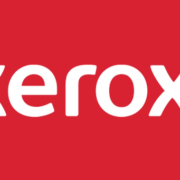Why Employee Experience is Key to Digital Transformation.
An Interview with Fouad ElNaggar
When Fouad ElNaggar talks about employee engagement, it makes you wonder why more companies aren’t lining up to pour all their resources into improving the employee experience. ElNaggar is the CEO of Sapho, an employee digital experience portalprovider that helps people work better using technologies their companies already have.
He laments how, in a world of tremendous digital innovation, our workplace technologies, software and processes look like they belong in an episode of the old TV show, “Buck Rogers in the 25th Century.” He warns that if companies don’t take action to preserve their most valuable employees, they won’t be around for very much longer.
“It’s crazy to me that these are the systems we give to people, while pretending we care about employee experience and employee engagement,” he said. “Soon, everyone’s going to be on the same page around employee engagement. They’re going to realize: If I’m not on top of this, I’m going to fall behind. I’m going to be competitively disadvantaged in my market.”
ElNaggar was also a presenter at this year’s CMSWire and Digital Workplace Group’s Digital Workplace Experience. We had a chance to talk with him about the topics he covered at the conference, and get some tips on how you can better engage your employees so you can keep them longer, and keep your organization moving forward.
Employee Engagement: Staying Relevant, Driving ROI
With all of the evidence around how engaged employees drive ROI, what’s keeping companies from making employee engagement a priority?
The reason that people aren’t running to it — even though the data says it’s incredibly profitable to do so — is that companies are living in a state of fear right now. Whether they’re selling bricks or ball bearings, they’re saying, “If I don’t do a digital transformation, I’m going to be totally disrupted and become irrelevant.” And most of the time when people think about digital transformation, they’re 100-percent focused on the customer, not on the employee.
Take traditional banks, for example. They’re competing with these modern online banks that make it easy for people to access their account information and receive good interest rates. Meanwhile, traditional banks are mailing a fob to their customer base, asking them to push a button, and then quickly type an eight-digit code just to be able to log in to their website. It becomes obvious that traditional banks are working off of legacy systems which require these practices, while online banks have access to modern technology that empowers their customers. Taking this a step further, if these traditional banks don’t have modern infrastructure, will the best talent even consider working there? This is when companies start to realize that the secret to driving digital transformation is to create a digital workplace. If you have a digital workplace, you’re going to attract, empower, and retain the type of employees that will actually drive a digital transformation.
There’s a lot of research out there on the costs of onboarding, as well as losing employees. What do you think are the biggest costs of not providing employees with a modern workplace experience?
On onboarding: Not enough people think about how much it costs to acquire the best employees. There’s a huge upfront expense to get someone excited about your company, convince them to accept an offer, and help them make their way into your organization. To hire someone in middle management — not even at the executive level — companies are spending between $30,000-$50,000.
But every one of these companies has some weird part of their onboarding system that doesn’t work well, which creates a bad initial impression. We worked with one financial services customer and found that 41 percent of their employees start their first day without having a computer ready for them.
Think about that for a second. Someone made a commitment to you. They’ve decided to put their heart and soul, energy, and eight hours a day into your company and their career. That’s the point where their engagement level is highest. And for their first experience to be that deflating? Now I’m playing “catch up” just to get that person back up to that initial level of enthusiasm. This is a secret cost that every company has to bear, and it’s the most important one.
On losing employees: Usually it takes between six to 18 months for people to really hit full stride at their organization. And now that person churns out. I’ve lost a fully productive person I’ve invested real money in. When someone churns out who’s good, everyone else has to do a little extra to pick up the slack until they fill that headcount. Now I’m putting stress on the rest of my employees. And then I’m starting the cycle all over again.
I have to spend the money to attract somebody new, train them, and wait until they can get up to full capacity. These are the hidden costs that destroy businesses. If you can’t bring on the best employees and keep them, you’re not going to get better as an organization.
In your Digital Workplace Experience presentation, you talked about the cognitive dissonance felt by employees who work with outdated systems in an organization that develops modern technologies for external customers. Please tell us a little more about this.
On the work side, dissonance happens when we ask employees to build forward-thinking Apple Watch apps, figure out how to get our content on Roku, or figure out how to make something work on an iPad, while at the same time giving them 25-year old enterprise software to work with on their 2007 Dell laptop.
There’s also this dissonance that exists in your consumer life, when you’re used to software looking, acting, and driving your behavior in a certain way, like the ease of using apps on your mobile phone. And then you walk into this door every day at 9 a.m. and you’re walking into an alternate reality, saying, “Where am I? Why do I have to type stuff into a terminal? Why do I have to use software that looks like it came from the Jiffy Lube?”
For organizations that want to drive ROI through employee engagement and satisfaction, how can they get started?
The first step is getting a commitment from management that Are People Analytics the Answer to Your Employee Engagement Woes?, and that it’s going to be a journey. We’ve found that in organizations where the C-level has made this mind shift that employee engagement matters, and that it will help them drive more profit, they’re free to execute on the tactics of a digital workplace strategy.
One vector we need to attack is culture. Encourage people to say, “Hey, maybe we’re not doing things the best way possible. I should care about that. I should care about employee engagement.” Just like any cultural shift in an organization, it’s not one that’s solved with software or a silver bullet. It’s just work.
Another vector is physical. I tell my employees to walk into a customer’s building, and notice: Do they have digital sign-in? Do they have guest WiFi that doesn’t require you to send an email to an assistant to get access? When you walk into the conference room, do they have a projector on the table with a lightbulb and the fan blowing? There are so many things you can fix on the physical level to at least start making a visible commitment to a digital workplace.
Where do you see employee engagement trends moving in the next five years?
It’s super clear that in the next five years, employee engagement efforts are going to be table stakes. Not a competitive advantage, table stakes. And if you’re a large company that’s not investing in employee engagement, you’re guaranteeing an acceleration of your demise because you’re just not going to be able to attract and empower the type of employees you need to run a digital transformation.











